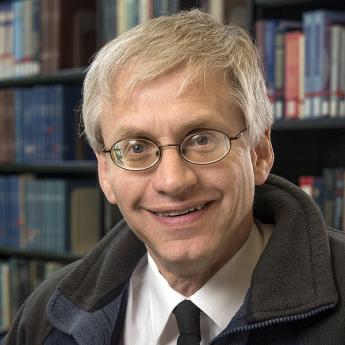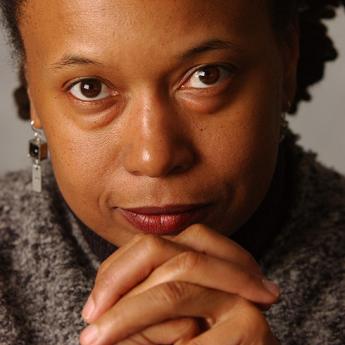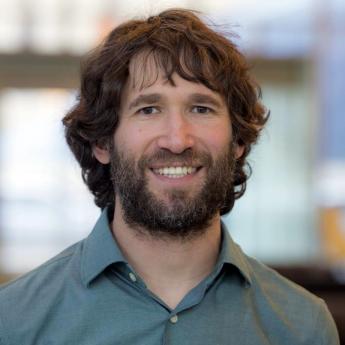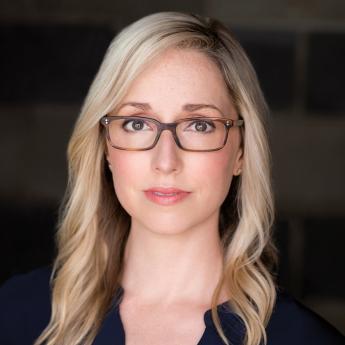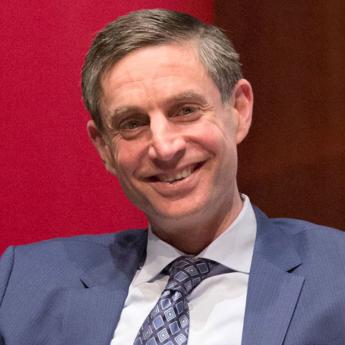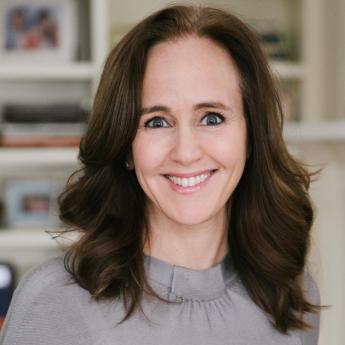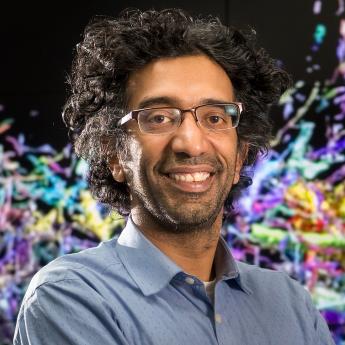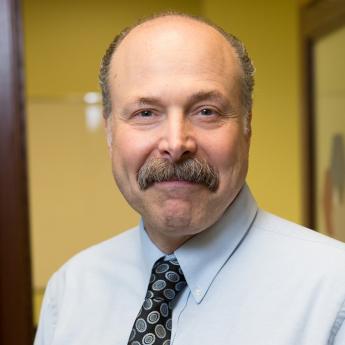Show Notes
Batteries have revolutionized our lives, especially the invention of rechargeable batteries, which have enabled us to have cellphones, laptops, and electric vehicles. But as we transition to more forms of green energy, we're facing a serious dilemma: Will our current lithium-ion batteries be able to sustain us?
Battery scientist Shirley Meng says we need to explore different metals and elements that could last longer and charge faster. Meng is a chief scientist at the Argonne National Laboratory and a professor at the Pritzker School of Molecular Engineering at the University of Chicago. For the past two decades, she has been pioneering research on new energy storage materials — ones that are affordable, can be mined ethically, and most importantly, ones that can be recycled efficiently.
Subscribe to Big Brains on Apple Podcasts, Stitcher and Spotify.
Subscribe to the Big Brains newsletter.
Please rate and leave a review for the Big Brains podcast.
(Episode published August 4, 2022)
Related:
- Setting the Stage for Solid-State Battery Success—UC San Diego News Center
- Start-up Group1 seeks to commercialize potassium-ion batteries—Chemical & Engineering News
- Qichao Hu, CEO of SES, To Participate in Inaugural Lithium Metal Battery Conference 2022—Yahoo Finance
- Tesla supplier Panasonic eyes 20% jump in battery density by 2030—Reuters
- A liquefied gas electrolyte to create temperature-resilient lithium-metal batteries—Tech Xplore
- Sion Power’s Lithium Metal Battery Technology Assessed by Leading Independent Industry Expert
Transcript:
Paul Rand: Were all familiar with this sound, low battery. It’s time to charge your device. Losing charge on your phone is annoying, but when it comes to electric cars, losing power, or homes or even whole cities, battery power can become a life and death situation. Especially as we transition to more forms of green energy.
Tape: When it comes to renewables, it’s clear that the winds of change have begun to blow.
Tape: But the big question is, do we have the technology to store it an efficient and cost effective way?
Tape: As the world has shifted to green energy, there’s been a huge focus in recent years on developing ways of storing that power for the days when the sun doesn’t show and the wind doesn’t blow.
Tape: What we need is a transition strategy. Without it, every time there is a shock to the system, bad weather, poor storage, we will face an energy crisis.
Paul Rand: Today. Lithium I batteries are the leading storage contender for the battery of the future, but some scientists believe that we need something even better.
Shirley Meng: We are searching for the best solution for large scale grid storage, because to help the society to transit into renewables, our lithium batteries may not be the ultimate answer.
Paul Rand: That’s Shirley Meng, a chief scientist at Argonne National Laboratory and a professor at the Pritzker School of Molecular Engineering at the University of Chicago. For the past two decades, Meng has been pioneering research on how to make our batteries last even longer.
Shirley Meng: I cannot stop telling you how many times people told me I chose the wrong direction.
Paul Rand: Okay.
Shirley Meng: Because battery is already an old technology and that we had a very, very limited resources when I was pursuing PhD.
Paul Rand: But in the last few years, Meng has proven them all wrong. She’s made incredible breakthroughs and redesigning batteries to make them last longer in technology as big as cars.
Shirley Meng: If we sustain this growth speed, maybe by 2035, about half of the light duty passenger cars will be electric.
Paul Rand: And as small as a phone.
Shirley Meng: The cell phone battery after four years, maybe it’s about a thousand cycles. Okay. If you charge once a day. We have so many researchers around the world that has demonstrated that to go for 10,000 cycles or a 100,000 cycles is entirely possible. It’s scientifically possible. So think about how one of the ways to improve efficiency is to make things better utilized, being used longer.
Paul Rand: If we’re going to achieve our goal of cutting carbon emissions, by switching to renewable sources to power our cars, our homes, and our cities.
Shirley Meng: I think lithium ion battery people, we felt like we are falling behind. Yeah. So we have duty to our future generations to make it better.
Paul Rand: From the University of Chicago Podcast Network. This is Big Brains, a podcast about the pioneering research and the pivotal breakthroughs that are reshaping our world. On this episode, the race to improve energy storage. I’m your host, Paul Rand.
Paul Rand: If we really want to have a greener future, it’s going to take a lot more than convincing everyone to buy an EV or put solar panels on the roof. Solar wind, or hydroelectric energy, it all needs to be stored somewhere.
Shirley Meng: Everyone is using batteries to power our device, power our cars, power our home. If you think about 8 billion people, and if we maintain the standard of the United States quality of life, it’s about 30 kilowatt hour per day. So the scaling is unbelievable.
Paul Rand: I wonder if you can just help me get a bigger picture of the problem that we are trying to solve here. What is energy storage? And what role is it playing in our world today? And what role does it need to play tomorrow?
Shirley Meng: Let me maybe draw an energy for energy storage comparing to refrigerator at home. So you always store additional food and drink in the refrigerator because we don’t want to always go to the supermarket. We have to feel we are abundant in food.
Paul Rand: So if we think about a battery, like a refrigerator, what happens when it runs out of space? If you can’t store that extra food anywhere, it’s of course going to go to waste.
Shirley Meng: In fact, in the last whole century, about 60%, I would say 57% to 60% of the energies are all went to waste. They’re not being used efficiently.
Paul Rand: Oh my gosh. I didn’t know that.
Shirley Meng: Yes. If we think about over 100 plus years ago, when Westinghouse and Edison, when they’re putting all the substations for productions of energies, nobody’s worrying about the waste of energy.
Paul Rand: Now, imagine that refrigerator isn’t just for your house, but for an entire city. And it needs to work well enough to store enough food for millions of people.
Shirley Meng: So you can’t really do a good job if we don’t have that huge refrigerator of storage device to actually enable you to meet the demand in a more perfect sense. And of course, the grid is much more complicated than just the storing food, because you have the quality of the grid. It has to maintain 60 Hertz in the United States. You have to think about a peak demand. You have to think about ramping when the sunset, the wind stop blowing. So it’s very complex.
Paul Rand: So if you can maybe talk to me today and say, well, where are we today in what batteries can do and what they can’t do?
Shirley Meng: So let’s get a quick history lesson of batteries.
Paul Rand: Wonderful.
Shirley Meng: Now, if you look at the battery history, since 1800, so actually the first voter pile, the AA batteries that we use is actually from an invention from 1800, Alexander Volta. In the 1860s, that’s where the French scientist invented the lead acid.
Paul Rand: The lead acid battery was the first rechargeable battery ever created.
Shirley Meng: And then 1960s, Ovshinsky is the American scientist who discovered nickel-metal hydride batteries.
Paul Rand: Thanks to Ovshinsky, we ended up with technology like digital cameras and laptops. And his battery even led to the very first mass produced electric vehicle from General Motors in the 1990s.
Tape: It accelerates from 0 to 60 and eight seconds. And you can travel 120 miles without using a drop of gas. That’s because you don’t fill it up, you charge it up. It’s the electric powered Impact by General Motors.
Shirley Meng: So in fact, we had many generation of batteries.
Paul Rand: But in 1991, a huge breakthrough happened. Sony introduced the world’s very first commercial rechargeable, lithium ion battery.
Shirley Meng: We enable new applications. We enable applications you never thought about. Who would have imagined we have iPhone, iPad on our hand?
Tape: A phone, and an internet communicator, an iPod, a phone. Are you getting it? These are not three separate devices. This is one device.
Shirley Meng: My point being is that every time we invent a new battery chemistry, we enable new applications.
Paul Rand: Lithium ion batteries have revolutionized our world today. For their size and their weight, they can store a lot of energy and they’re pretty easy to charge. But are they really the battery that could carry us into a greener future?
Shirley Meng: Lithium ion batteries actually take a lot of energy to produce. One kilowatt hour of lithium iron batteries take about 50 to 60 kilowatt hour to produce it. So the energy used to produce those batteries matters, because battery itself is not a renewable. How we produce it, how we use it, how we recycle it, eventually will give the carbon footprint for the battery itself.
Paul Rand: If you’ve wondered why electric vehicles are still expensive, blame the lithium ion battery. In order to make one, you need four parts, a cathode, an anode, an electrolyte, and a separator. The cathode uses metal like nickel, cobalt, and lithium, and the anode uses graphite. But some experts have warned that the world isn’t producing enough of these metals to keep up with the demand.
Shirley Meng: So for instance, in the battery world, suddenly people realize that if we want to build so many gigawatt factory, we’re running out of lithium, we’re running out of nickel. We’re running out of copper. We’re running out of all the elements. And the mining industry takes a decade to get permit, to get things going, to get those elements out of the ground.
Paul Rand: In fact, in 2021, the Democratic Republic of the Congo supplied more than 70% of the world’s cobalt. The country holds nearly half of the world’s reserves.
Tape: The world’s biggest tech companies are being sued over child mining debts in the Democratic Republic of Congo. A human rights group file a lawsuit on behalf of 14 Congolese families. They accuse companies like Apple, Google, Dell, Microsoft, and Tesla from benefiting from child labor to mine cobalt. That mineral is key to powering batteries used in our cell phones, computers, and our electric cars.
Paul Rand: And there’s another environmental concern with these batteries.
Shirley Meng: Lithium ion batteries today are not 100% recycled. So unlike lead acid batteries, that was 99.5% recycled in the United States, less than 20% of the lithium ion batteries are recycled today. Allow me to explain why it’s difficult, because it’s not the same chemistry. So in the lead acid batteries, we use water based electrolyte. So it’s very safe to dissemble. In the lithium ion batteries, actually, we use some kind of organic electrolyte that is flammable. It’s a hazardous waste. It’s very expensive actually to ship the spent lithium ion batteries.
Paul Rand: Meng, along with Argonne National Laboratory are trying to solve this. They’ve developed what they call the resale model, which calculates the cost and the environmental impact of the battery at each stage of its life cycle.
Shirley Meng: So there are many solutions there. But to reach society, we will need a regulation. We need governments to put certain incentives, to incentivize people to recycle. And then the ultimate question is who pays the recycling? Maybe the consumers, like us, already paid. I was told when I bought the iPhone, I already paid the recycling. So there was a really little education or little information dissemination among us about the best practices. I think that still needs to be sorted out. In the near future, I think you see several startups are going to collect spent batteries
Paul Rand: Right now, lithium ion batteries are mostly used in electric cars and cell phones. But if you own an EV and live somewhere like Chicago, where it gets really cold, your battery will not be happy.
Shirley Meng: Yes, Paul, I think the current battery is just like our human body. We’re not happy when the temperature goes above 40 degrees celsius, and we’re not happy when the temperature go below minus 20 C. So lithium ion battery is exactly like a human body. Yeah. So honestly, I just moved from San Diego to Chicago. My son was asking, “Mama, are you going to bring your Tesla to Illinois?” I hesitated for a long time because of the cold, and the range will be impacted. Of course, there’s a BMS, battery management system, to warm up the batteries to allow you still function. The car will still function, no problem. But your efficiency will be impacted because a lot of the energy itself will have to be used for thermal management.
Paul Rand: And so are we still trying to improve lithium ion batteries? Or do we recognize that that’s a dated technology and energy has to go into finding new types of storage?
Shirley Meng: Very nice question. Yeah. I think the technology is in no way to be done. There’s so much more can be improved. So ultimately, I said we use so much energy to produce lithium ion batteries. And then there are a lot of effort being put in, can I cut the amount of energy by half. We call it green manufacturing. Transformative green manufacturing. Yeah. So those are all the things that we are actively working on to make lithium ion batteries even better.
Paul Rand: So Meng and other material scientists are looking for more than one alternative to lithium ion batteries. The answers, they’re somewhere on the periodic table. That’s after the break.
Paul Rand: If you’re getting a lot out of the important research shared on Big Brains, there’s another University of Chicago Podcast Network show you should check out. It’s called Not Another Politics Podcast. Not Another Politics Podcast provides a fresh perspective on the biggest political stories, not through opinions and anecdotes, but through rigorous scholarship, massive data sets, and a deep knowledge of theory. If you want to understand the political science behind the political headlines, then listen to Not Another Politics Podcast, part of the University of Chicago Podcast Network.
Paul Rand: Lithium ion batteries have been in the spotlight over the past few decades, but there’s another battery that is finally getting a second chance, lithium metal.
Shirley Meng: Lithium metal batteries is invented actually back 50 years ago, half a century ago.
Paul Rand: But because the lithium and the metal combination was more complex, the technology didn’t originally work out.
Shirley Meng: We just have lithium metal to act as connective electrode. And that imposed a huge design change in the battery architecture. To make the metal anode, you will experience a lot of volume change. And for the battery engineers, that is actually something very significant. And so when you do lithium metal ones, you can actually do it quite well. But if you do it a few hundred times, you cannot always make sure the lithium metal is deposited in the very smooth way.
Shirley Meng: So when you don’t have a smooth lithium metal, you grow something called a dendrite. So basically, look like tree branches. And those tree branches, if they stick out too far and they go cross the electrolyte and hit the cathode, that’s what we call the shorting. And those kind of shorting can cause major safety problems. So that’s why 50 years ago, it was tried, commercialized, taken out from the market due to safety,
Paul Rand: However, Meng and other material scientists think they can get it right this time.
Shirley Meng: 50 years later, we have better electrolyte. We have better BMS, battery management system. And we think this time we got it, we will be able to do this. Even though, I have to be honest with you, Paul, there are people who are skeptical if this technology will be as safe as lithium ion cells.
Paul Rand: One startup in Silicon Valley is putting the technology to the test. They think their lithium metal battery could be twice as energy dense as lithium ion batteries. But they’re not the only ones testing out different materials.
Shirley Meng: There are batteries use zinc as the anode and maybe manganese oxide as the cathode. So they are at the R and D state. Actually, they already went very far in terms of building prototypes. There are few companies, are doing this for great storage. The reason is because zinc is very low cost, manganese oxide is even more low cost. And because they don’t use the lithium, so they don’t have the current supply chain constraint with the Lithium.
Paul Rand: And there’s an element we’re all familiar with in our favorite salty snacks that’s being tested in batteries too, sodium ion.
Shirley Meng: Perhaps sodium batteries can be the solution. Lithium is the lightest metal, and then below that is sodium. And if we can make sodium batteries as good as lithium ion batteries, I think we can go very, very far way.
Paul Rand: So of all the options that you’re discussing, which of those are you most encouraged by?
Shirley Meng: So I think, maybe I will take this opportunity to say, I don’t believe one batteries will satisfy all the needs. I believe that there will be a portfolio of batteries that answer to the different needs. So for instance, I would say for the high end electrical vehicles, performance driven 0 to 60 miles in three seconds, drive 500 miles per charge, that kind of high end, we can use lithium ion batteries, or even lithium metal batteries. There are needs, for example, like urban driving in busy city like Paris, Tokyo, Shanghai, you don’t need that long range. However, you need the batteries that we can fast charged. And then very safely packed in the densely populated areas.
Shirley Meng: More so in the very large scale storage you need, let’s say a few hundred megawatt hour batteries for the neighborhood. You want the batteries so cheap maybe only $20 per kilowatt hour. So the whole system, the neighborhood can afford that kind of system. So perhaps some manganese oxide, zinc could be the option. So my sense is that we need to look at the challenges we’re facing more holistically and stop dreaming about one battery will fit all, because we are trying to make sure one battery solve all the challenges. And I think after 10 years of intense research, it is becoming very clear to me that we need to adjust our approach.
Paul Rand: Different types for different needs.
Shirley Meng: Exactly. Yes.
Paul Rand: Now you’re primarily putting your energy into solid state batteries right now. Is that right?
Shirley Meng: You can say that, yes.
Tape: So we’re talking about solid state batteries, it’s a disruptive charging capability to the traditional lithium ion EV industry.
Paul Rand: Solid state batteries use a solid electrolyte instead of the liquid or polymer gel that are currently used in lithium ion batteries.
Shirley Meng: We were able to do certain things in solid state that liquid electrolyte cannot do.
Tape: What is that capability and how are you able to produce it at scale?
Paul Rand: Solid state batteries are smaller, lighter, and potentially safer, because they’re not flammable.
Shirley Meng: We had one or two very interesting breakthroughs in the last few years when we are doing solid state battery research.
Paul Rand: In one of the biggest breakthroughs, Meng was able to build a solid state battery with an anode made out of silicon, a material with 10 times the energy density as the graphite anodes used today.
Shirley Meng: Last year, we demonstrated 99.9% silicon. So almost entirely silicon. And we took all the graphite out and we can make it work in the solid state batteries.
Paul Rand: It’s an important development because the liquid electrolytes in today’s lithium ion batteries destroy silicon, which is why they haven’t been used commercially.
Tape: Everybody is well aware, solid state batteries hold great promise. But there are a lot of hurdles that need to be overcome.
Paul Rand: But with Meng’s solid state battery, that wouldn’t be an issue. Not only that, these batteries could work better in hot temperatures.
Shirley Meng: Yeah. So on the high temperature side, we are anticipating solid state will play a major role, improving the high temperature performance for the batteries of the future.
Paul Rand: Is it achievable?
Shirley Meng: It is achievable. But I think it will require time. We are looking at a five year timeline, if the technology readiness continue to improve. It does have some difficulties, because the current gigawatt factory planning is according to the liquid cells. I think the manufacturing side people are more cautious because if solid state do go forward, I think tier one manufacturers like LG Energy Solution, they have to think about how to build gigawatt factory skill machine to be able to manufacture solar state. And that’s a very, very big challenge. And I would say that solid state batteries also provide us an opportunity to reinvent green manufacturing because the current lithium ion batteries manufacturing process is more or less optimized. So we are looking at this with a really optimistic attitude. It’s definitely achievable. It’s just requires a lot of hard work and investment.
Paul Rand: If we’re really going to scale up, businesses, insurance companies, and policy makers, will have to be on board.
Shirley Meng: It’s not something engineers and scientists can do alone. We need the help from the business side and from the policy side. So I want to mention that our society really under invested in the battery chemistry. So right now I think a lot of the new technology are still nascent. And without thorough evaluation investment, it’s unclear which one, sodium ion, or sodium solid state, liquid solar state, which one is going to win out first, which one is going to be reaching the ultimate technology readiness. It’s unclear.
Shirley Meng: So I really appreciate actually US Department of Energy. They have a portfolio of investment and let the scientists and the engineers to compete. Because in the end, if we have multiple choice in terms of battery selection, it helps with the supply chain robustness. It actually helps also regional choices because countries like United States, we are actually not abundant in lithium, nickel, those elements. But we are abundant in iron, manganese, or sodium. So I think strategically, we have to think about how we offer the government and the neighborhoods choices, where they can make those choices best for their situation.
Paul Rand: Even though Meng is a battery expert, she doesn’t believe batteries are the only solution for our green future.
Shirley Meng: Batteries cannot solve all the problems, because there are limitations of what batteries can do. All the way from mining, to the using, to the end usage, to the recycling, the whole system are not in place to answer to the demand that we’re going to grow 100 times more and use more batteries, produce more batteries, and recycle more batteries. I think the amount of pressure we are experiencing now is unbelievable, because everybody think batteries can solve all the problems for energy transition.
Shirley Meng: For instance, in some regions sun do not come out in weeks. So there are some base load energy productions that cannot be done with renewables and battery solutions. So I also want to be very realistic about the reality. We have to be pragmatic about this. I think battery can play a major role, a key role, but we will need other technology to also come up other carbon neutral technology to come into play.
Paul Rand: If we want to completely shift to renewable energy, the United States will require at least 100 times more storage by the year 2040.
Shirley Meng: We have to actually keep investing in the energy storage and encouraging young people to pick this as their career development. Yeah, so we have duty to our future generations to make it better.
Matt Hodapp: Big Brains is a production of the University of Chicago Podcast Network. If you like what you heard, please leave us a rating and review. The show is hosted by Paul M Rand and produced by me, Matt Hodapp and Lea Ceasrine. Thanks for listening.
Episode List
Lessons From Our Country’s Largest School Closing with Eve L. Ewing (Ep. 20)
Eve Ewing explains how race, history and ‘institutional mourning’ intersect in the largest mass public school closing in U.S. history.
Simple Solutions to Address Social Issues with Harold Pollack (Ep. 19)
Prof. Harold Pollack promotes ‘evidence-based optimism’ to tackle our most complex social issues—from finances to crime to health care.
What We’re Getting Wrong About Millennials with Cathy Cohen (Ep.18)
A leading scholar on race and politics says some of our assumptions about millennials are all wrong.
What Ripples in Space-Time Tell Us About the Universe with Daniel Holz (Ep. 17)
UChicago cosmologist discusses discovery of gravitational waves and colliding black holes.
Rise of the White Power Movement with Kathleen Belew (Ep. 16)
Kathleen Belew traces the history of white supremacy, from Vietnam through the Oklahoma City bombing
Climate Change’s Human Cost With Michael Greenstone (Ep. 15)
Economist discusses global energy, impact of air pollution on society and why scientists should talk clearly about climate change
David Axelrod on Why ‘Democracy is Messy’ and the Future of Politics (Ep. 14)
In this alumni edition of Big Brains, David Axelrod discusses the midterms, the rise in divisive politics from Obama to Trump and why young people make him optimistic about our future
How Talk Builds Babies’ Brains with Dana Suskind (Ep. 13)
Physician and author gives advice to teach kids from day one and discusses her transformation to a social scientist.
Mapping the Human Brain with Bobby Kasthuri (Ep. 12)
UChicago neuroscientist describes a high-tech effort to map the brain’s trillions of neurons and understand what makes humans unique.
Quantum technology: From sci-fi to reality with David Awschalom (Ep. 11)
Prof. David Awschalom discusses how quantum technology could lead to breakthroughs in communication, encryption and medicine, and how he’s helping train the next generation of quantum engineers.



